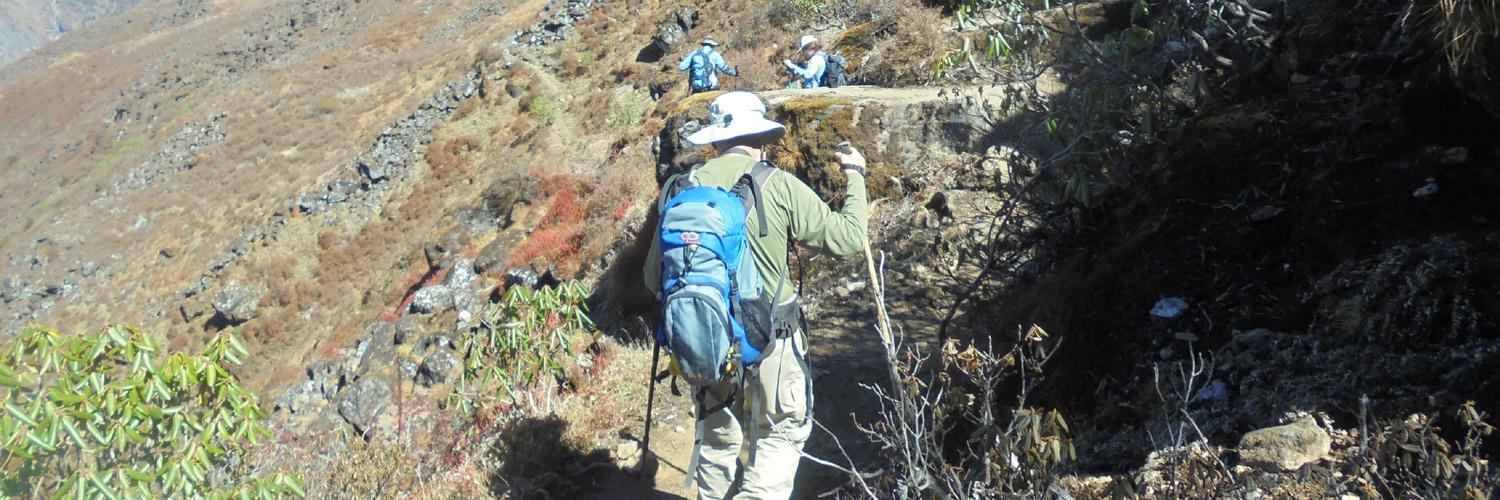1. How long is the Kanchenjunga Base Camp Trek?
Kanchenjunga Base Camp Trek typically takes around 25 days to complete, allowing for acclimatization and enjoying the scenic beauty while ascending and descending through picturesque valleys, glaciers, and remote villages in the Kanchenjunga Conservation Area.
2. What is the starting point for the Kanchenjunga Base Camp Trek?
The starting point for the Kanchenjunga Base Camp Trek is usually Taplejung, a small town in eastern Nepal. From there, the trek proceeds through various villages like Chiruwa, Ghunsa, and Kanchenjunga Base Camp itself.
3. Is a permit required for the Kanchenjunga Base Camp Trek?
Yes, a special permit for Kanchenjunga, Kanchenjunga Conservation Area Permit (KCAP) is required for the Kanchenjunga Base Camp Trek. Additionally, TIMS (Trekkers’ Information Management System) card, is also necessary.
4. Are there tea houses or lodges along the Kanchenjunga Base Camp Trek route?
Unlike some popular treks in Nepal, the Kanchenjunga region has limited tea houses and lodges. The trek involves camping in most sections, and trekkers need to be fully supported with a camping crew, including guides, cooks, and porters.
5. What are the highlights of the Kanchenjunga Base Camp Trek?
Kanchenjunga Base Camp Trek is renowned for its stunning views of Mt. Kanchenjunga (8,586m), the third highest peak in the world, along with other majestic peaks. It also offers a chance to experience diverse landscapes, rich biodiversity, and culturally unique settlements of the region.
6. Is the Kanchenjunga Base Camp Trek difficult?
Yes, the Kanchenjunga Base Camp Trek is considered a challenging and strenuous trek. It involves walking at high altitudes, crossing high passes, and navigating through rugged and remote terrain. Prior trekking experience and excellent physical fitness are highly recommended.
7. What is the best time to do the Kanchenjunga Base Camp Trek?
The best time for the Kanchenjunga Base Camp Trek is during the pre-monsoon (spring) and post-monsoon (autumn) seasons. These months fall between March to May and September to November. The weather is relatively stable during these periods, offering clearer views of the mountains.
8. What is the maximum altitude reached during the Kanchenjunga Base Camp Trek?
The highest point of the Kanchenjunga Base Camp Trek is the Kanchenjunga North Base Camp, also known as Pangpema, at an elevation of approximately 5,140 meters (16,863 feet) above sea level.
9. How do I get to the starting point of the Kanchenjunga Base Camp Trek?
The trek usually starts with a flight from Kathmandu to Biratnagar. From Biratnagar, you’ll take another domestic flight to Taplejung, which serves as the starting point of the trek.
10. Is it necessary to hire a guide and porter for the Kanchenjunga Base Camp Trek?
Yes, due to the remote and challenging nature of the trek, hiring a guide and porter is highly recommended. An experienced guide can help you navigate the trails and provide valuable insights into the local culture and environment. Porters can carry the heavy camping gear and supplies, making the trek more enjoyable for you.
11. What type of physical fitness is required for the Kanchenjunga Base Camp Trek?
Kanchenjunga Base Camp Trek demands excellent physical fitness. It involves long days of walking in challenging terrain and at high altitudes. Prior trekking experience in high-altitude regions is beneficial. Cardiovascular endurance and strength training are essential to prepare for the trek.


